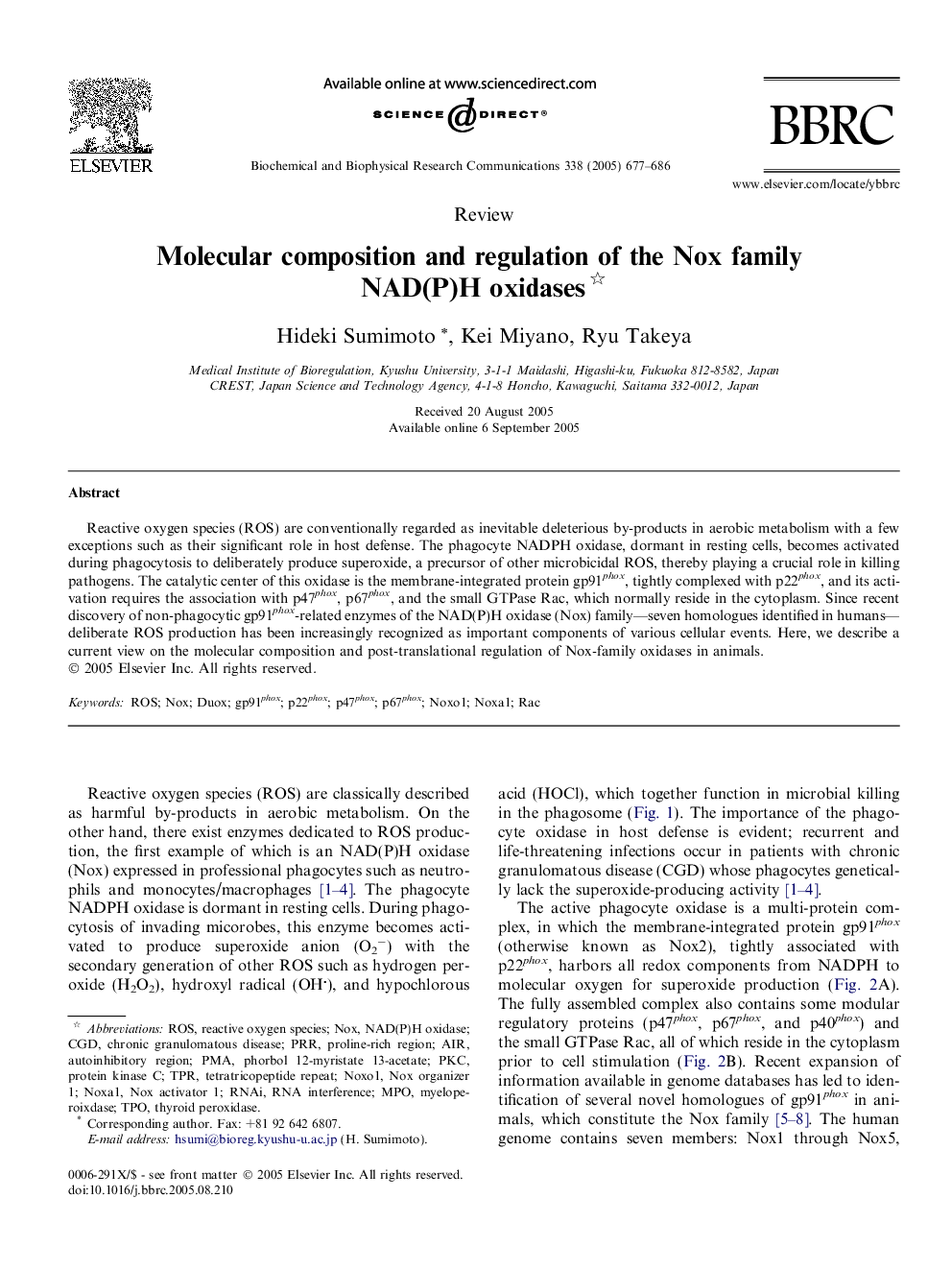| Article ID | Journal | Published Year | Pages | File Type |
|---|---|---|---|---|
| 10768238 | Biochemical and Biophysical Research Communications | 2005 | 10 Pages |
Abstract
Reactive oxygen species (ROS) are conventionally regarded as inevitable deleterious by-products in aerobic metabolism with a few exceptions such as their significant role in host defense. The phagocyte NADPH oxidase, dormant in resting cells, becomes activated during phagocytosis to deliberately produce superoxide, a precursor of other microbicidal ROS, thereby playing a crucial role in killing pathogens. The catalytic center of this oxidase is the membrane-integrated protein gp91phox, tightly complexed with p22phox, and its activation requires the association with p47phox, p67phox, and the small GTPase Rac, which normally reside in the cytoplasm. Since recent discovery of non-phagocytic gp91phox-related enzymes of the NAD(P)H oxidase (Nox) family-seven homologues identified in humans-deliberate ROS production has been increasingly recognized as important components of various cellular events. Here, we describe a current view on the molecular composition and post-translational regulation of Nox-family oxidases in animals.
Related Topics
Life Sciences
Biochemistry, Genetics and Molecular Biology
Biochemistry
Authors
Hideki Sumimoto, Kei Miyano, Ryu Takeya,
